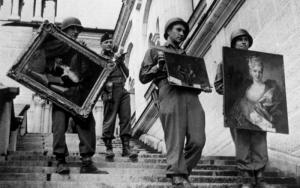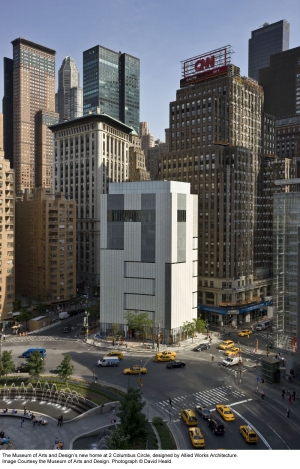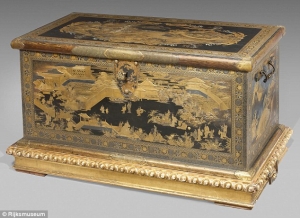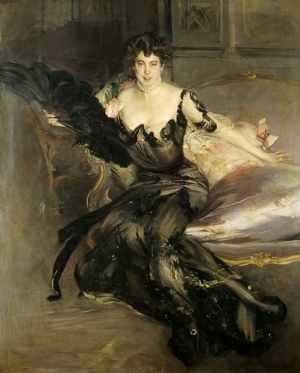|
Displaying items by tag: victoria & albert museum
The earliest known example of Mughal jade; spectacularly large spinels inscribed with the names of emperors from the Mughal treasuries; a jewelled gold tiger’s head finial from the throne of the famed Tipu Sultan of Mysore and a dazzling brooch inspired by Diaghilev’s Ballet Russes made in Paris in 1910 are among the treasures on public display for the first time in the UK, as part of the V&A’s new exhibition Bejewelled Treasures: The Al Thani Collection.
More than 480,000 people visited Alexander McQueen: Savage Beauty at the V&A, making it the most visited paid-for exhibition at the Museum ever. The exhibition was the only major UK retrospective of the work of the visionary fashion designer Lee Alexander McQueen, widely celebrated as one of the most innovative designers of his generation.
Alexander McQueen: Savage Beauty was originally presented at the Costume Institute at the Metropolitan Museum of Art in New York in 2010. The exhibition has been open at the V&A since March 14, operating for more than 1,000 hours for public opening and private events.
Beginning in 2016, London’s Design Museum will offer visitors free entry to its permanent collection. The change to the institution’s admission policy is part of the new UK VAT refund scheme that encourages museums and galleries to nix entrance fees. The scheme allows qualifying museums and galleries to claim back value added tax incurred in relation to the collections for which there is free access, the buildings in which they are displayed, and their storage and restoration. The UK’s VAT refund scheme currently supports approximately 120 museums and galleries across the country, including Tate Modern, the National Gallery, and the Victoria & Albert Museum.
The change to the Design Museum’s entry fee will coincide with the institution’s move to its new home in Kensington. The museum will be housed in the former Commonwealth Institute building, which has stood vacant for over a decade.
On Saturday, September 13, the twelfth annual London Design Festival opened to the public. The nine-day celebration of contemporary design promotes London’s creativity, drawing in the city's greatest thinkers, practitioners, retailers, and educators. The Victoria & Albert Museum (V&A) serves as the central hub location for the event, which spans the entire city, including various cultural institutions, galleries, luxury boutiques, art schools, public spaces, and more.
Conceived by designers Sir John Sorrell and Ben Evans in 2003, the London Design Festival is comprised of over 300 events and exhibitions staged by hundreds of partner organizations across the design spectrum and from around the world.
The most spectacular artistic rivalry in British history will be revived in September when blockbuster exhibitions by two of the nation's most renowned painters pitch them into direct competition, just as they were in their lifetimes two centuries ago.
The simultaneous shows unavoidably provoke the question asked ever since the artists were showing side by side in the Romantic age: who is the greatest British painter ever?
Is it Joseph Mallord William Turner, whose glowing, occasionally abstract, visions of sea and sky and the violent elements are celebrated at Tate Britain from 10 September? Or is it his contemporary John Constable, whose acute observations of the clouds, trees and changing light of his native Suffolk are examined at the V&A 10 days later?

London’s Victoria & Albert Museum holds the only known copy of a complete list of “degenerate art” that was confiscated by Nazis from public institutions in Germany. The Entartete Kunst was compiled by Hitler’s Ministry for Public Enlightenment and Propaganda and includes information on the provenance and fate of each work. The list was donated to the museum by the widow of Heinrich Fischer, an Austrian-born art dealer, in 1996. Since its acquisition, the Entartete Kunst has been used by provenance researchers from around the world.
For the first time ever, the Victoria & Albert Museum will make images of the original pages of the Entartete Kunst available online. The 479-page volume lists institutions alphabetically by location and for each museum, the confiscated works are listed and include information on what happened to each piece. For many works, the name of the buyer and a price are given, while others are marked with an “x,” indicating that they were destroyed.
The Nazis deemed any work that was “un-German” or “Jewish Bolshevist“ in nature degenerate art. While virtually all modern art was deemed degenerate, the Nazis promoted paintings and sculptures that were traditional in nature. The Nazis forced avant-garde German artists into exile and their works were either sold at auction or acquired by museums or collectors. In 1942, a large portion of so-called degenerate works by Pablo Picasso, Salvador Dalí, Paul Klee, Fernand Léger and Joan Miró were destroyed in a bonfire.
A PDF of the Entartete Kunst will be made available on the Victoria & Albert museum’s website starting at the end of January.
London’s Victoria and Albert Museum announced that they discovered a previously unknown oil sketch by English Romantic painter John Constable. The sketch of trees, which dates back to 1821 or 1822, was found tucked beneath another work by the artist, “Branch Hill Pond: Hampstead.” Conservators had removed the painting’s lining while preparing for the upcoming exhibition, “Constable: The Making of a Master.”
Constable’s daughter donated the contents of the artist’s studio -- including 92 oil sketches, 297 drawings and watercolors, and 3 sketchbooks -- to the Victoria and Albert Museum in 1888. The recently discovered sketch is currently on view at the institution.

The Museum of Arts and Design in New York has appointed Dr. Glenn Adamson as the new Nanette L. Laitman Director. Adamson, who previously worked at London’s Victoria & Albert Museum, will succeed Holly Hotchner, who stepped down at the end of April. Adamson will assume his role at the Museum of Arts and Design on October 15, 2013.
Adamson helmed the V&A’s Research Department, which oversees, evaluates and supports the development of museum projects. In this role, Adamson helped bring major exhibitions to fruition, managed partnerships with other institutions and led academic fundraising. He also contributed to the museum’s publications, educational programs, media outreach and commercial activities. Before joining the V&A in 2005, Adamson served as Curator for the Chipstone Foundation in Milwaukee, Wisconsin, which collects and promotes research within the field of decorative arts.
An advocate for the reconsideration of craft as an inescapable cultural force rather than an unassuming art classification, Adamson has had a profound effect on makers as well as craft historians and theorists. He has published a number of books on the subject and is founding co-editor of the academic, peer-reviewed Journal of Modern Craft.
Adamson said, “I am honored to have been selected to serve as the next director of MAD…I look forward to building on the museum’s recent successes and to working with the museum’s visionary board and senior leadership to enhance and extend MAD’s potential.”

The Rijksmuseum in the Netherlands purchased a rare antique Japanese chest once used as a television stand for $9.5 million. London’s Victoria and Albert Museum had been searching for the 17th century lacquer chest, one of only ten in the world, since 1941.
The saga of the chest began in 1640 when the head of the Dutch East India Company’s Japanese office commissioned the chest along with three others just like it. All four of the chests were later sold to a French diplomat who passed two of the works off to the British poet William Beckford. Beckford, whose daughter was married to the Duke of Hamilton, inherited the chests and they became part of the Hamilton Palace’s collection. During a sale in 1882 to raise funds for the palace’s upkeep, the Victoria and Albert Museum purchased one of the chests while the other eventually went missing. What the museum didn’t know was that an unassuming Shell Oil engineer had purchased the missing chest in 1970 for a mere $150. The elusive chest was used as everything from a television stand to a storage cabinet until auctioneer Philippe Rouillac and his brother, Aymeric, recognized it.
While the Victoria & Albert Museum would have liked to have been able to bid on the chest when it went to auction, they simply didn’t have the funds. Julia Hutt, curator of the V&A’s East Asian department, said, “I was delighted to hear the Rijksmuseum had won the auction – it is a very fitting home for the chest.”

Edwardian Opulence: British Art at the Dawn of the Twentieth Century is now on view at the Yale Center for British Art in New Haven, CT and explores the art created in Britain during the reign of King Edward II. The period, which is known as the Edwardian era, lasted from 1901 to 1910.
Sandwiched between the rigid Victorian era and the devastation of World War I, the Edwardian era was a time of rapid technological growth, significant artistic development, shifting political and social structures, and increased consumption among the elite. Edwardian Opulence explores how all of these changes influenced the creation, consumption, and display of British art through a range of objects.
Highlights from the exhibition include portraits by John Singer Sargent (1856-1925) and Giovanni Boldini (1842-1931), diamond-studded tiaras, vivid Autochrome color photographs, bejeweled bell pushes by Carl Fabergé (1846-1920), and an extravagantly embellished gown that belonged to the American-born Vicereine of India.
The show is comprised of 170 works from public art museums and private collections. Lenders include Queen Elizabeth II, the British Museum, the Victoria and Albert Museum, Tate Britain, the Royal Academy of Arts, the Metropolitan Museum of Art, and the Musée d’Orsay. Edwardian Opulence will be on view through June 2, 2013.
|
|
|
|
|